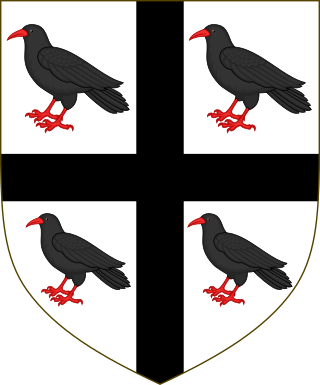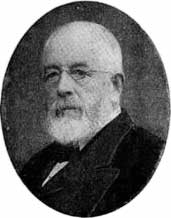
Earl of Stradbroke, in the County of Suffolk, is a title in the Peerage of the United Kingdom. It was created in 1821 for John Rous, 1st Baron Rous, who had earlier represented Suffolk in the House of Commons.

Lord Aylmer, Baron of Balrath, in the County of Meath, is a title in the Peerage of Ireland. It was created in 1718 for the naval commander Matthew Aylmer, the second son of Sir Christopher Aylmer, 1st Baronet, of Balrath. Lord Aylmer's son, the second Baron, represented Rye in the House of Commons. The latter's grandson, the fourth Baron, succeeded his kinsman as seventh Baronet, of Balrath, in 1776. The titles remain united. He was succeeded in both titles by his son, the fifth Baron. He was a general in the Army and served as Governor General of Canada from 1830 to 1835. Lord Aylmer assumed by Royal licence the additional surname of Whitworth in 1825 on the death of his uncle Charles Whitworth, 1st Earl Whitworth. On his death, the titles passed to his younger brother, the sixth Baron. He was an admiral in the Royal Navy.

Baron Hotham, of South Dalton in the County of York, is a title in the Peerage of Ireland. It was created in 1797 for the naval commander Admiral William Hotham, with remainder to the heirs male of his father. Hotham was the third son of Sir Beaumont Hotham, 7th Baronet, of Scorborough, and in 1811 he also succeeded his nephew as eleventh Baronet. Lord Hotham never married and on his death in 1813 he was succeeded in both titles by his younger brother Beaumont, the second Baron and twelfth Baronet. He had previously represented Wigan in the House of Commons.

There have been two baronetcies created for persons with the surname Armstrong, both in the Baronetage of the United Kingdom. One creation is extant as of 2010.

There have been three baronetcies created for persons with the surname Croft, one in the Baronetage of England and two in the Baronetage of the United Kingdom. All three creations are extant as of 2008.
The Aird Baronetcy, of Hyde Park Terrace in Paddington in the County of London, is a title in the Baronetage of the United Kingdom. It was created on 5 March 1901 for the civil engineering contractor and Conservative politician John Aird.
The Henniker Baronetcy, of Newton Hall in the County of Essex, was created in the Baronetage of the United Kingdom on 2 November 1813 for Brydges Henniker, who had earlier represented Kildare Borough in the last Irish Parliament. He was the youngest son of John Henniker, 1st Baron Henniker. The sixth baronet was an admiral in the Royal Navy and sat as Conservative member of parliament for Galloway. The eighth Baronet was a brigadier in the Royal Engineers. As of 2014 the present Baronet has not successfully proven his succession and is therefore not on the Official Roll of the Baronetage, with the baronetcy considered dormant since 2000.

There have been four baronetcies created for persons with the surname Sykes, two in the Baronetage of Great Britain and two in the Baronetage of the United Kingdom. Three of the creations are extant as of 2008.
There have been four baronetcies created for persons with the surname Hall, one in the Baronetage of Nova Scotia and three in the Baronetage of the United Kingdom. Three of the creations are extant as of 2010.
There have been three baronetcies created for persons with the surname Noble, all in the Baronetage of the United Kingdom.
The Miles Baronetcy, of Leigh Court in the County of Somerset, is a title in the Baronetage of the United Kingdom. It was created on 19 April 1859 for the banker and Conservative politician William Miles. His son, the second Baronet, was also a banker and Conservative politician. The family's bank, founded in 1750, eventually became part of NatWest.

There have been seven baronetcies created for persons with the surname Russell, three in the Baronetage of England and four in the Baronetage of the United Kingdom.
The Meyrick Baronetcy, of Bush House in the parish of St Mary in the County of Pembroke and of Apley Castle in the parish of Wellington in the County of Salop, is a title in the Baronetage of the United Kingdom. It was created on 5 May 1880 for Thomas Meyrick, Conservative Member of Parliament for Pembroke from 1868 to 1874. Born Thomas Charlton, he had assumed by Royal licence the surname of Meyrick in lieu of his patronymic in 1858. As of 2007 the presumed fifth Baronet has not successfully proved his succession and is therefore not on the Official Roll of the Baronetage.

The Milbank Baronetcy, of Well in the County of York, and of Hart in the County of Durham, is a title in the Baronetage of the United Kingdom. It was created on 16 May 1882 for Frederick Milbank, member of parliament for the North Riding of Yorkshire and for Richmond.

The Tate Baronetcy, of Park Hill in Streatham in the County of London, is a title in the baronetage of the United Kingdom. It was created on 27 June 1898 for the sugar magnate and philanthropist Henry Tate. He gave Tate Gallery to the nation. The second baronet was high sheriff of Lancashire in 1907. The fourth baronet served as high sheriff of Rutland from 1949 to 1950. The fifth baronet served as managing director of the family company, Tate & Lyle, and was later chairman of the London Futures & Options Exchange.
There have been two baronetcies created for persons with the surname Curtis, one in the Baronetage of Great Britain and one in the Baronetage of the United Kingdom. One creation is extant as of 2007.

The Leeds Baronetcy, of Croxton Park in the County of Cambridge, is a title in the Baronetage of the United Kingdom. It was created on 31 December 1812 for George Leeds. He was an equerry to Prince Augustus Frederick, Duke of Sussex. The Croxton Park estate in Cambridgeshire had been in the Leeds family since circa 1568. As of 2011 the presumed ninth and present Baronet, a resident of Canada, has not successfully proven his succession and is not on the Official Roll of the Baronetage.

The Gunning Baronetcy, of Eltham in the County of Kent, is a title in the Baronetage of Great Britain. It was created on 3 September 1778 for Robert Gunning, Minister Plenipotentiary to Berlin and St Petersburg.

The Wombwell Baronetcy, of Wombwell in the County of York, is a title in the Baronetage of Great Britain. It was created on 26 August 1778 for George Wombwell, Chairman of the Honourable East India Company and Member of Parliament for Huntingdon. The fourth Baronet fought in the Crimean War and took part in the Charge of the Light Brigade and in 1861 served as High Sheriff of Yorkshire. As of 13 June 2007 the presumed seventh and present Baronet had not successfully proven his succession to the title, and is therefore not on the Official Roll of the Baronetage, with the baronetcy considered dormant since 1977.
There have been three baronetcies created for persons with the surname Maitland, two in the Baronetage of Nova Scotia and one in the Baronetage of the United Kingdom. Two of the creations are extant as of 2008 while the other is either dormant or extinct.














